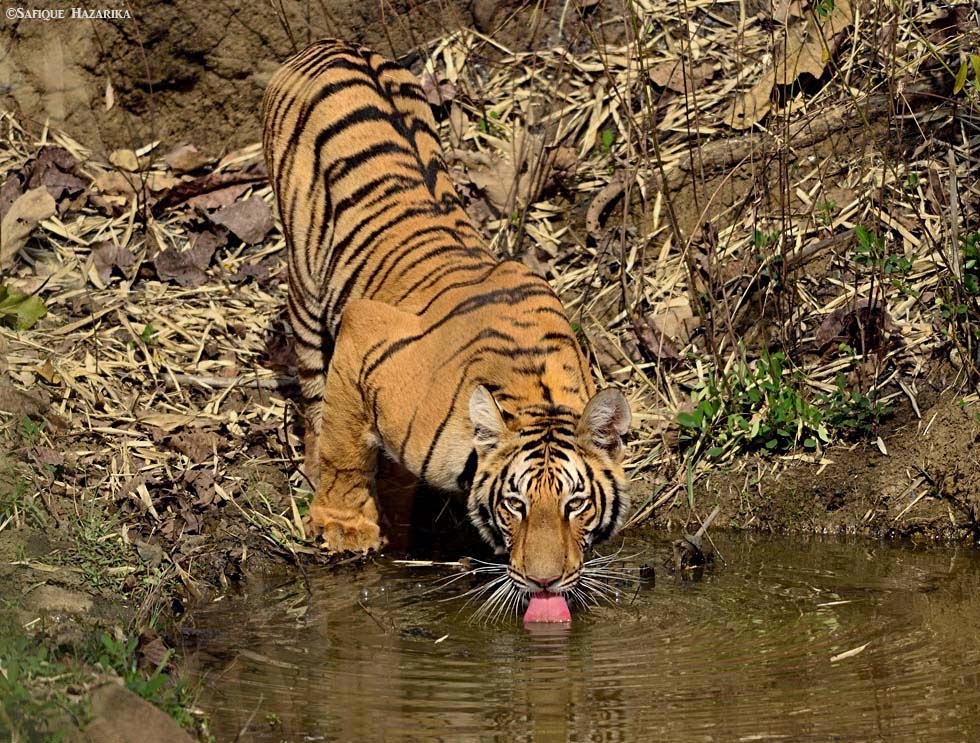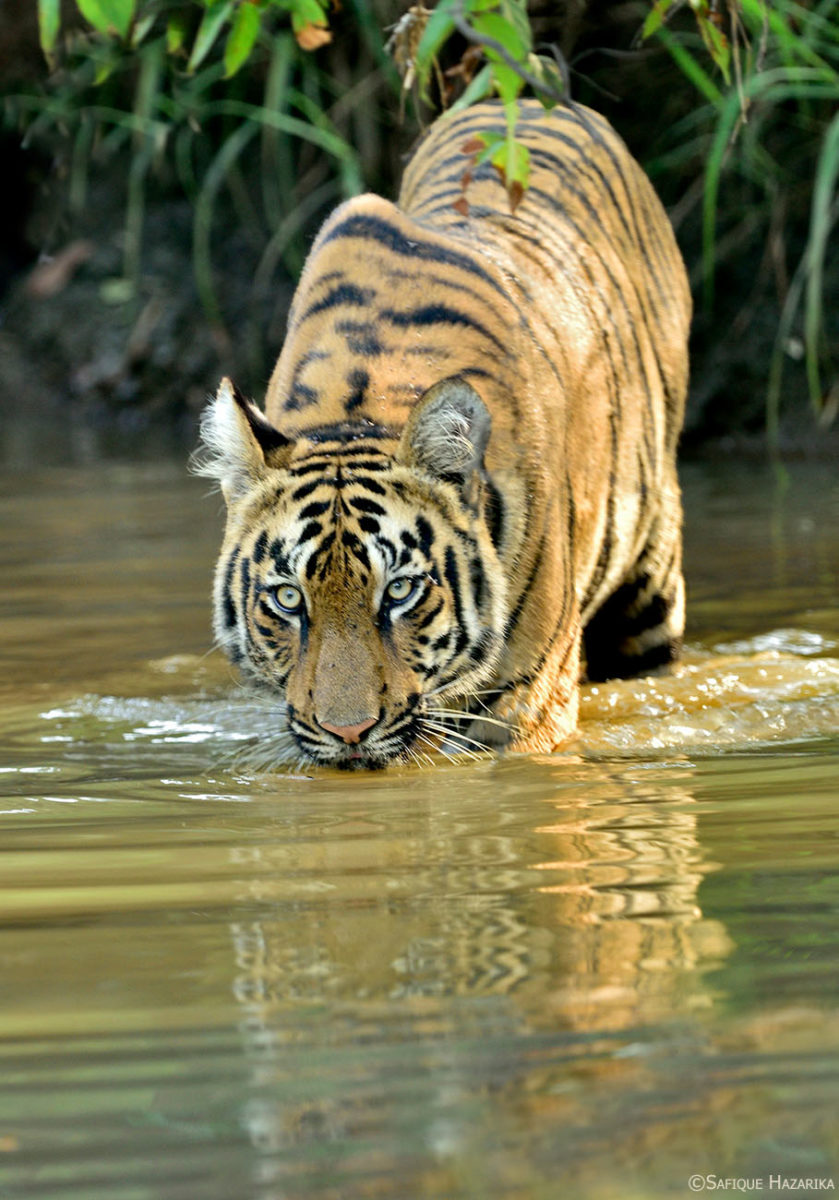
My indulgence with the jungle books of Jim Corbett during school days would often transpose me to the dreamland of Big Cats. The ‘Call of The wild’ never stopped echoing in my mind and, years later, the curiosity led me to several off the beaten paths in search of a tiger—just to shoot the elusive beast, but with a camera 🙂
Corbett — in his book ‘Man-Eaters of Kumao’— says, “A tiger is a large hearted gentleman with boundless courage and when he is exterminated—as exterminated he will be, unless public opinion rallies to his support—India will be the poorer by having lost the finest of her fauna.”
Corbett’s words turned prophetic; the tiger population in India was almost on the verge of extinction and less than 3000 grace our forests today. In such a scenario, catching a glimpse of these wild cats in a vast forest is like finding a needle in the haystack. However, it is indeed possible with the right set of information, passion, and patience.
Some of the popular places for Tiger sighting in India are Jim Corbett National park, Ranthambore, Bandhavgarh, and Kanha. But, the one I would like to introduce, which has also become my favorite over ten years is Tadoba Andhari Tiger Reserve—the reason being this less known forest in central India is increasingly becoming populated – not with people but with tigers. It is now a popular Tiger habitat with almost 40-45 tigers (according to the 2013-14 census) living in the core and nearby buffer areas (relatively a small area than the 1000 square KM dense forest).

What makes Tadoba more interesting is its diverse animal and prey base. Besides tigers, the place is home to two other hard-to-find predators, i.e., leopard and the wild dogs (Dholes) – you have an equal chance of sighting them, though leopards are too elusive. It’s a dry deciduous forest full of bamboo shrubs, which serves as an ideal camouflage for tigers to stalk their prey easily without getting noticed. There are several other animals
that inhabit this forest—various species of deer (spotted, sambar, barking and blue bulls), sloth bear, wild boar, bison, crocodile and various type of birds; enough to keep any nature lover excited with everything Tadoba has to offer in this hidden treasure.
How to track and see a tiger?
Nobody can ensure a tiger sighting, but there is a lot one can do to increase the probability of a sighting.

Tigers are solitary animals, stalkers, and the leader of the forest; they are very quiet and elusive. One of the ways to track these wild cats is to observe the behavior of other animals in the forest—whenever a tiger moves or is in the vicinity, other animals give a distinctive panic/alert call, deer appear nervous and look at one direction, and monkeys jump on a treetop and make a peculiar sound.
Tigers are fond of water and loves playing in the water. Also, they don’t have sweat glands; hence, especially during peak summer when water becomes scarce, they are likely to come to the waterholes/ ponds at least a few times a day – and this becomes the hot spot for tiger sighting.
Though tigers are solitary, a family with newborn stays together for up to two years, so if there is news of a family in a particular area, the chances of sighting a tiger in that area are very high. Cubs are the bold, inquisitive and most playful ones, and fun to watch.
How to visit Tadoba or nearby places?
Tadoba located in Chandrapur district of Maharashtra in central India, just 135 km from Nagpur. Nagpur is well connected to major Indian cities by air and rail. From Nagpur, one can reach Tadoba easily by road.
Nagpur is known as the hub of wildlife in India—in addition to Tadoba, one can also visit Pench, Nagzira, Umred-Kharhandla, Kanha, and Bandhavgarh.
Where to stay and book a permit for safaris?
There are different gates for park entry—Mohrali, Kolara, Kolsa, and Navegaon; the first one is the most preferred because of easy accessibility and accommodation options. There are two resorts run by the forest department—MTDC Tourist Complex and Eco-Tourism complex; booking to both can be made through their websites are given below:
It is important to note here that bookings should be made well in advance to ensure that you don’t face reservation hassles.
The Tourist Complex is surrounded by forest and water bodies with lots of birds; it is a place where one can enjoy the joys of nature with the shrill of birds, deer calls, and even growl of Tigers.
There are other private resorts, though the options are limited; resort Tiger Trail, Serai, and Saras can be a good alternative depending on budget.
Do not forget to book the safaris online from Mahaecotourism; it is easy and hassle-free. There are various ranges in the park—book Mohrali range if you are staying in Mohrali; if unavailable, select Khatunda gate. The vehicle, an open six-seater jeep with a guide, needs to be booked separately.
Time to Visit?

Though the park remains open round the year, only the main road is accessible during monsoon (July-September). The comfortable time to visit is October-February when the weather is good and the forest has a lush green cover. summer (March-June) is the time when maximum tiger sighting happens; however, the temperature can reach 45° C during the period.
Given the diverse and rich flora and fauna, a fulfilling trip is guaranteed in Tadoba. For those who like to explore off the beaten path and for those who like to enjoy the unique eco heritage of this country, this is the place to visit. And, if you happen to meet the large-hearted animal, do share the thrill with others, spread the word and make people aware of the need to save these majestic beasts.
Tadoba Gallery











 Total views : 10715
Total views : 10715
Leave a Reply